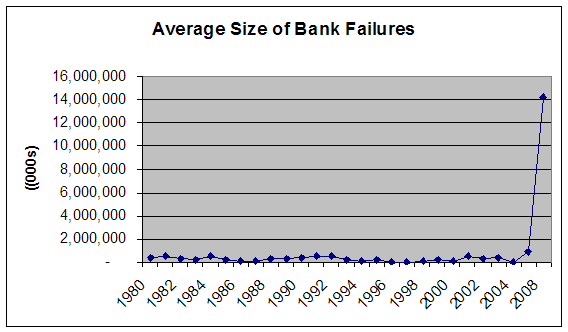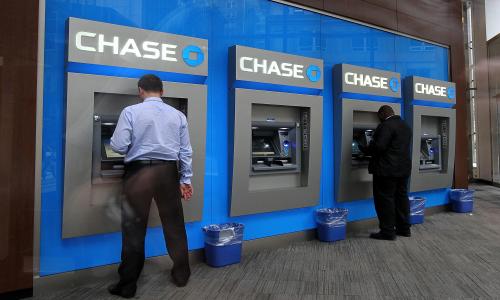Last July I compared bank failures in 2008 to bank failures during the S&L Crisis in the late 1980s. At the time, Indymac has just failed and many hoped the banking system would stabilize. Then came Fannie, Freddie, Lehman, AIG, WaMu, Wachovia, Citi, Merrill...
The data now shows that the financial crisis far exceeds anything that occurred in the 1980s.
While there have only been 24 failures so far, they have accounted for $341,000,000,000 in assets, far above the $164,000,000,000 in assets for failed banks in 1989. Consolidation has played a big part of this. There are 50% fewer banks today than there were 10 years ago. By any measure, this banking crisis is much more massive than what happened in the late 1980s.

This credit crisis has also impacted the biggest of the financial institutions. Many of the biggest banks took enormous gambles on mortgage related securities and held assets that turned toxic once the mortgage market turned down. When the best turned bad, these toxic assets dwarfed their capital, leading to rating downgrades, which led to investor and depositor flight, which led to insolvency. Leverage can create enormous gains in good times but it can also result in staggering losses in bad times. Big banks, which previously seemed like pillars of stability in bad times were swept away.
A look at the charts shows that in the 1980s, bank failures did not spike in one year and then come back down, but rather remained elevated for an extended period from 1988 - 1993. It's possible that the TARP will prevent further bank failures but don't count on it. Treasury Secretary Paulson said that the TARP was not meant to rescue every bank. With real estate values continuing to fall, I imagine we'll see the FDIC setting up more shotgun bank marriages a la WaMU/Chase and Wachovia/Wells Fargo in 2009. Who the government will let live and who will be allowed to go under will be an interesting policy question for the new administration.
This data was taken from the FDIC's failed bank list. The list includes Washington Mutual, which was purchased in distress by JP Morgan Chase. But it does not include Wachovia, purchased under similar circumstances by Wells Fargo or Countrywide, acquired by Bank of America.. It also doesn't include Citigroup, which would have failed were it not bailed out by the government or any of the non- FDIC regulated financial companies that were bailed out, that failed, or were purchased in distressed condition - Fannie Mae, Freddie Mac, AIG, Lehman, Bear Stearns, Merrill Lynch. Even without the inclusion of these institutions, it's clear that 2008 will be a year that the banking world will be happy to put behind.









Comments
B. Standlee
August 28, 2009
I would really like to see these charts updated. Is that possible?
Thanks.
Is this review helpful? Yes:0 / No: 0
Add your Comment
or use your Google account
or use your BestCashCow account